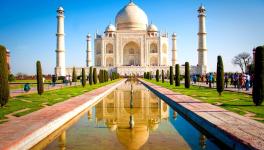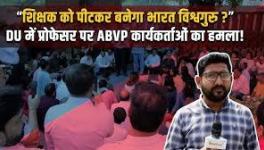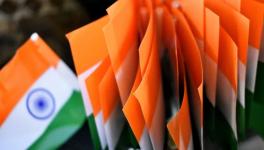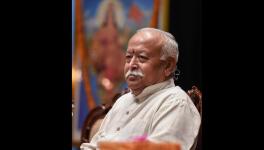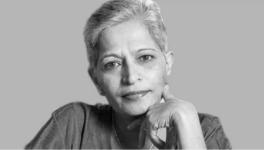Rastriya Dravida Sangha Aims to Raise Dravidian Awareness in Karnataka
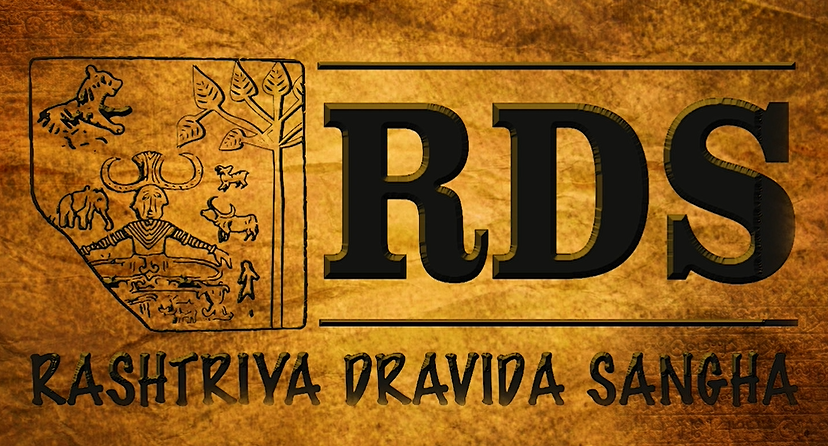
RDS Logo
The Rashtriya Dravida Sangha (RDS), launched in Bengaluru on January 12, aims to raise Dravidian consciousness in Karnataka. Journalist and screenwriter Agni Sreedhar is the founder-president of the organisation. The programme was conducted by Dravida City Movement founder Abhi Gowda.
Around 250 people turned up at the launch, at Bharat Scouts and Guides Auditorium, and raised slogans praising Kannada and Dravida. The chief guests included poet Banjagere Jayaprakash, film writer Kaviraj and GB Patil of the Jagatika Lingayat Mahasabha.
“Dravidians are a linguistic community with a common group of languages. It’s not a race of people; many tribes and communities are part of it. Having created many branches of languages, they created an identity for the nation. It is on the basis of this that we proudly call ourselves Dravidian,” Jayaprakash said at the launch.
“They (Harappan civilisation) worshipped female deities, water and Shiva. They had developed agriculture. The Sindhu civilisation was trading agricultural products with their contemporaries through the sea route. There has been no evidence that caste hierarchies existed among the people there. There are indications that this region had established people’s rule,” Jayaprakash added.
Holding the Aryans responsible for creating the caste system and praising the Dravidian culture’s “inclusivity”, he said, “With the arrival of the Aryans around 3,500 years ago, Dravidians left the region and migrated south. The Aryans set up the caste system and Shudras and Dalits were socially excluded. In the Dravidian culture, every community had its priests. But in the Aryan culture, the priests were from only one caste.”
Indian culture is a “mix of the Vedic and Dravidian cultures. But they [the government] want us to forget our culture and linguistic identity. They say that Sanskrit and Hindi are the main languages of this country”, Jayaprakash said.
Praising the Harappan civilisation, Patil said, “There was no exploitation of the working class. It was only after the arrival of the Aryans that the working class was considered impure and the priestly class sacred.”
Mentioning 12th century Lingayat social reformer, philosopher and Shiva devotee Basavanna’s opposition to caste discrimination, Patil said, “During his time, Dalits were forced to walk on streets only during noon because the sun is directly overhead and upper-caste people would not step on their shadows and be accidentally ‘polluted’. Basavanna opposed such practices and told people not to exploit Dalits in the name of religion.”
Patil added that Lingayats are “worshippers of Shiva and do not believe that he is present only inside a temple; he is everywhere. A Linga was found among the remains of the Harappan civilisation. That’s why I call myself a Dravidian today”.
Noted writer Shivasundar believes that a Dravidian identity may not receive a wider appeal in Karnataka. “Kuvempu’s song (which is the state anthem) says, ‘Jaya Bharata jananiya tanujate, jaya he Karnataka mate’, which translates to ‘Victory to the daughter of mother India, victory to mother Karnataka’. They consider Kannada as a daughter of mother India. Whereas Tamil nationalism completely refuted it. They said they were a different stock unrelated to Aryans,” he told Newsclick.
“Even the anti-Hindi agitations were not as strong in Karnataka. In some circles, there may be an attraction to the Dravidian narrative because it opposes the RSS agenda. However, there is also an anti-Tamil Nadu sentiment in Karnataka owing to the Cauvery river dispute. So, Dravidian identity may not have a wider appeal here,” he added.
Shivasundar also mentioned the “anti-Muslim” Kannada nationalism, which “existed” before Independence. “Kannada nationalism in the early 19th century evoked memories of the Vijayanagara empire. The collapse of the empire (which was the pride of Kannadigas) was brought about by Muslims. Therefore, the Muslim invasion was seen as an assault on Kannada and Hindus.”
On the other hand, the “Tamil nationalists belonged to middle and backward castes. The carriers of Kannada nationalism (pre-Independence) were Brahmins”, he added.
Gatti Narayana, who teaches at the School of Policy and Governance, Azim Premji University, is sceptical as well about the viability of a Dravidian identity in Karnataka. “It is an interesting development but not a culmination of Dravidian feelings among the Kannada public. This region always had a stronger national sentiment,” he told Newsclick.
Female cricketer Veda Krishnamurthy, one of the guests at the launch, coincidentally got married on the same day. After wrapping up what she referred to as a simple “registration marriage”, she showed up at the launch. Her gesture was appreciated by the guests and the audience.
AJ Khan of the Dalit Minorities Sene was also one of the guests. Several speakers expressed the desire to see a Tamil Nadu-like Dravidian movement in Karnataka. The imposition of Hindi and the RSS agenda against Muslims were condemned. Shreedhar said that many Muslims have associated with the RDS and added the word ‘Dravidian’ to their names. RDS is offering membership for Rs 100.
Get the latest reports & analysis with people's perspective on Protests, movements & deep analytical videos, discussions of the current affairs in your Telegram app. Subscribe to NewsClick's Telegram channel & get Real-Time updates on stories, as they get published on our website.











